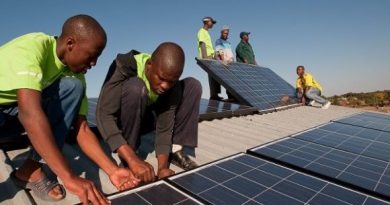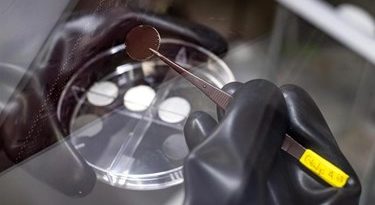World’s First: Solar Panels That Store Both Electricity and Heat
Building-integrated PV cells that supply both heat and electricity have been developed at SINTEF’s solar cell lab in Trondheim.

One answer to new energy demands of the world is to install building-integrated PV (BIPV) cells, either in the form of roof tiles or facade elements. However, the feasibility of this will require lower costs and more efficient output. Building-integrated PV cells that supply both heat and electricity have been developed at SINTEF’s solar cell lab in Trondheim.
“The concept involves a modular construction that makes it easy both to install and remove roof- and facade-mounted PV cells,” said Research Scientist Martin Bellmann, SINTEF.
“Our aim is to manufacture self-cooling, building-integrated PV cells. Self-cooling will dramatically increase the electrical output of the cells”, explains Bellmann.
The PV cells become very hot even if the outside temperature isn’t particularly high. On a good day, according to SINTEF, its test panels may often reach temperatures of 60 degrees. However, this heat causes the output to fall from 16 to 12 percent. This is the reason why the new PV cells are fitted with a separate component to cool them down.
Moreover, the new solar panel stores the heat generated as the sun shines on it. This means that the maximum output can be extracted.
This is achieved using an integrated tubing system that serves as a heat exchanger enabling it to heat water, for example.
The tubing system is being developed by Brunel University in London and Flint Engineering. The solar panels are supplied by the French company Apollo Solar, while SINTEF is developing the system used to integrate the tubing network in the PV cells. The demonstration projects have proven a high TRL (Technology Readiness Level).
“The concept involves a modular construction that makes it easy both to install and remove roof- and facade-mounted PV cells”, explains Bellmann.
It will now be tested and verified at SINTEF’s own full-scale facility at Gløshaugen in Trondheim.
“There we will not only be able to look into how the panels work under real-life conditions, but also to test different types of installation. This may have major significance for the performance of the PV cells”, explains Bellmann’s colleague Eivind Øverlid, a Research Manager at SINTEF.
The project was launched last autumn and is receiving NOK 92 million in funding as part of the EU’s Horizon programme.
Inputs from Saur Energy




